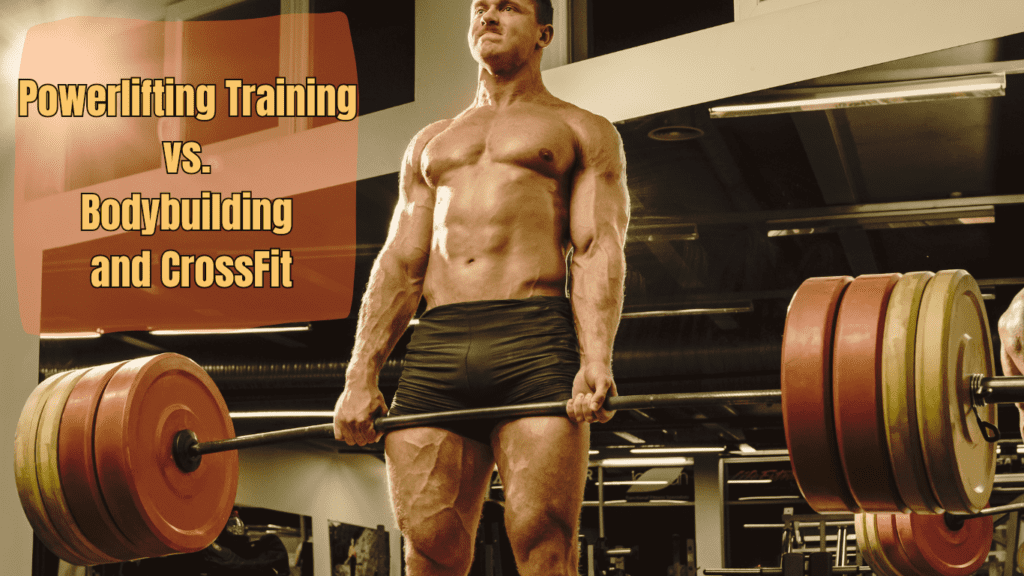Creating Your Powerlifting Program: Assessing Your Strength and Experience
In this article, we will explore how to design a comprehensive powerlifting program that helps you build strength, track progress, and achieve long-term success in your training journey.
Creating a powerlifting program is an exciting journey that empowers you to develop strength, technique, and consistency. Whether you’re new to lifting or looking to take your training to the next level, understanding where you currently stand is essential. Before diving into the details of structuring your workouts, it’s important to assess your current strength and experience level. This step will provide a foundation for building a program that aligns with your goals.
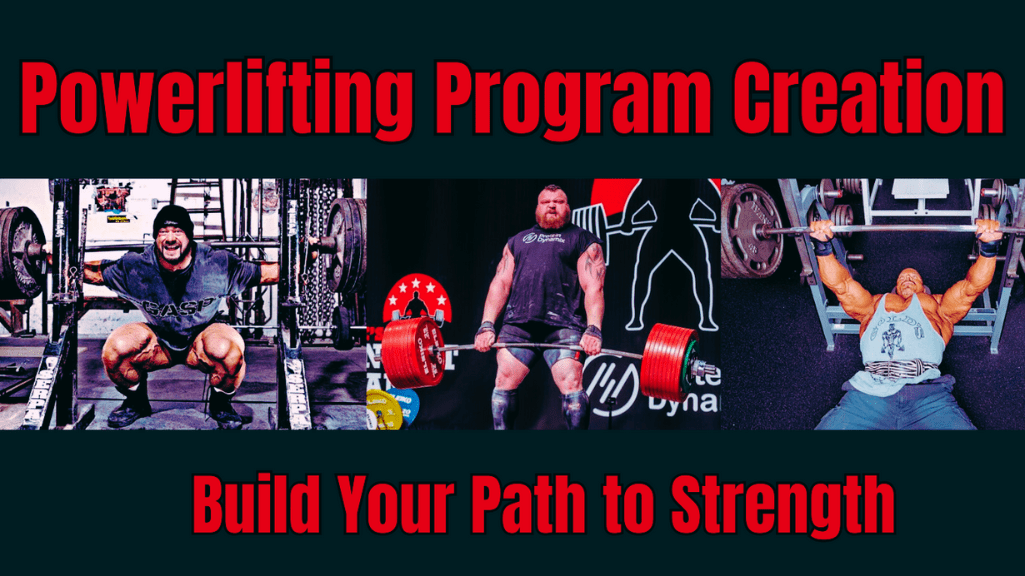
Understanding Your Current Level
Assessing Your Current Strength
To create a solid powerlifting program, the first step is evaluating your current strength. One of the most effective ways to do this is by tracking your 1RM (one-rep max) for the squat, bench press, and deadlift. Knowing your 1RM allows you to build a training plan that is both challenging and achievable.
- Tracking Your 1RM:
For beginners, estimating your 1RM can be done by using percentages of your current lifts (e.g., 70-75% of your 5-rep max). For more experienced lifters, testing your 1RM periodically ensures progression and keeps your lifts challenging.
In addition to your main lifts, accessory lifts like rows, overhead presses, and pull-ups play a crucial role in improving your overall performance. These exercises help build strength and balance muscle groups that directly contribute to your primary lifts.
Subscribe And Get Our Free E-Book:Unlocking The Power Of Nutrition-Supplements, Substitutes, and Superfoods!
Classification Guide
It’s helpful to classify your experience level based on your years of training and how close you are to your 1RM:
- Beginner: 1-1.5 years of training, lifting around 50-60% of your 1RM.
- Intermediate: 2-5 years of consistent training, lifting between 60-80% of your 1RM.
- Advanced: 5+ years of experience, regularly lifting over 80% of your 1RM.
Powerlifting Experience Progression Chart
| Experience Level | Training Focus | Strength Benchmark | Recommended Training Approach | Common Mistakes to Avoid |
|---|---|---|---|---|
| Beginner (0-1.5 years) | Building technique & foundational strength | ~50-60% of 1RM | Full-body workouts, higher rep ranges (6-12 reps), focus on movement patterns | Ego lifting, neglecting warm-ups & mobility |
| Intermediate (2-5 years) | Strength progression & muscle development | ~60-80% of 1RM | Progressive overload, periodization (e.g., linear or undulating), refining technique | Skipping accessory work, inconsistent recovery |
| Advanced (5+ years) | Maximal strength & specialization | ~80%+ of 1RM | Peaking strategies, advanced periodization (e.g., conjugate, block), competition prep | Overtraining, insufficient recovery, neglecting weak points |
These classifications provide a general idea of where you stand, but every individual’s progress will vary.
Experience & Technique
Experience plays a significant role in developing a strong foundation. For those who are new to lifting, mastering the basics is the first step to improving technique. For more experienced lifters, refining your form and ensuring consistent execution of movements is essential for long-term gains.
Technique is crucial in both minimizing injury risk and maximizing performance. Whether you’re a beginner or an advanced lifter, focusing on proper movement patterns, depth, and control will ensure safe, effective training. Investing time in perfecting your form allows you to push heavier weights while reducing the risk of strain or injury.
A powerlifting program tailored to your current strength level is the key to achieving consistent results. By assessing your 1RM, understanding your experience level, and prioritizing proper technique, you create a framework for sustained progress and long-term success.
How To Create Your Own Powerlifting Program Video
Defining Your Goals for Your Powerlifting Program
Setting clear and well-defined goals is a crucial step in creating an effective powerlifting program. Whether you’re just starting out or you’re more experienced, having specific objectives helps guide your training and measure progress along the way. In this section, we’ll explore how to set and refine your goals, ensuring they align with your personal motivations and lifestyle.
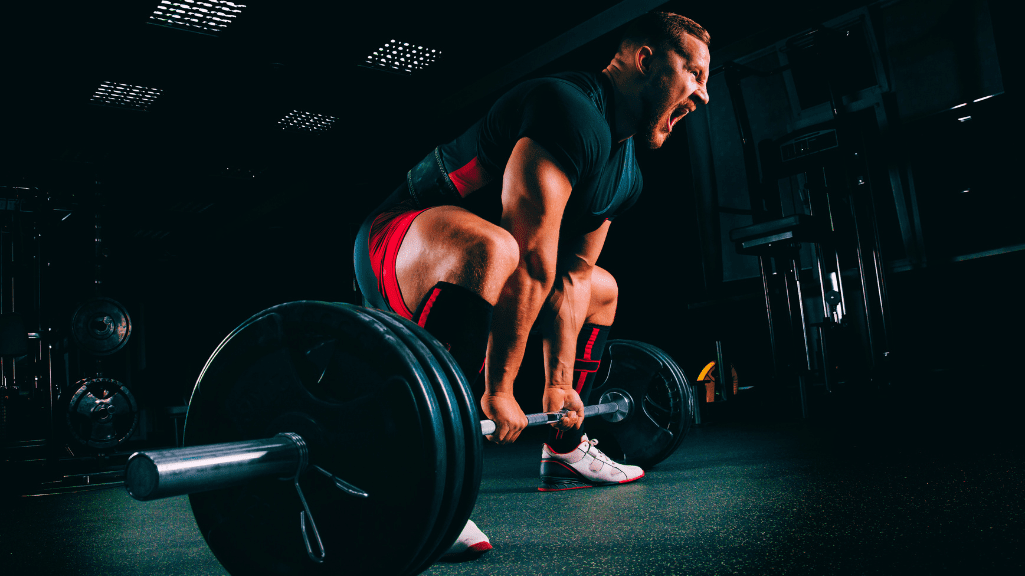
Setting Clear Goals
To build a successful powerlifting program, it’s important to define what you want to achieve. Goals can vary based on individual motivations, such as hypertrophy (muscle growth), maximal strength, or preparing for competitive powerlifting events. Here’s how you can tailor your goals to suit your needs.
Types of Goals
- Hypertrophy: Focuses on building muscle size and improving muscle definition.
- Maximal Strength: Aims to increase your one-rep max (1RM) across squat, bench press, and deadlift.
- Competitive Powerlifting: Targets preparation for a specific competition, optimizing lifts for a competitive total.
Each type of goal requires a different approach within your powerlifting program, but all must be aligned with your motivations and lifestyle.
Aligning Goals with Motivation and Lifestyle
One of the most critical aspects of setting goals is ensuring they fit into your daily routine. For example, if you have a busy schedule, you may need to focus on efficiency in your training sessions while managing recovery effectively. On the other hand, if recovery isn’t a concern, you can allocate more time toward intensity and volume in your workouts.
- Busy Schedule: Short-term goals like improving technique or lifting slightly heavier weights within 4-6 weeks can provide manageable progress.
- Recovery Focus: Emphasizing adequate rest and recovery may be necessary for those looking to optimize strength gains without risking injury.
Short-term and Long-term Goals
Breaking down your goals into short-term and long-term milestones provides a clear path toward success. Short-term goals help you stay motivated and focused on immediate improvements, while long-term goals ensure you’re progressing toward overarching objectives.
- Short-term Goals: These are typically achieved in monthly or 6-week cycles. They focus on building consistency and refining technique.
- Long-term Goals: These span a year or more, often aiming for a specific competition total or optimizing your performance for one or more lifts.
For example, a beginner might set short-term goals focused on improving their squat technique and gradually increasing weights week by week. Meanwhile, an advanced lifter might aim to achieve a specific total in a competition or increase their bench press 1RM by a set percentage over a few months.
Example Goals
- Beginner: Build foundational strength and technique, focusing on squats, bench press, and deadlift.
- Intermediate: Increase your 1RM in all major lifts while improving accessory work like rows and overhead pressing.
- Advanced: Target a competitive total in a powerlifting meet or optimize strength for a specific lift (e.g., bench press) while focusing on recovery and injury prevention.
Defining clear goals within your powerlifting program provides direction and purpose. By breaking them down into short-term and long-term milestones, you ensure consistent progress and can adjust your approach as needed to suit your personal lifestyle and training needs. Whether you’re chasing hypertrophy, maximal strength, or competition preparation, setting well-rounded and realistic goals is key to achieving success.
Program Design Fundamentals for Your Powerlifting Program
Creating an effective powerlifting program requires a thoughtful approach to structuring your weekly and monthly training sessions. Whether you’re a beginner, intermediate, or advanced lifter, understanding how to balance frequency, volume, and intensity is essential for maximizing your progress while minimizing the risk of injury.
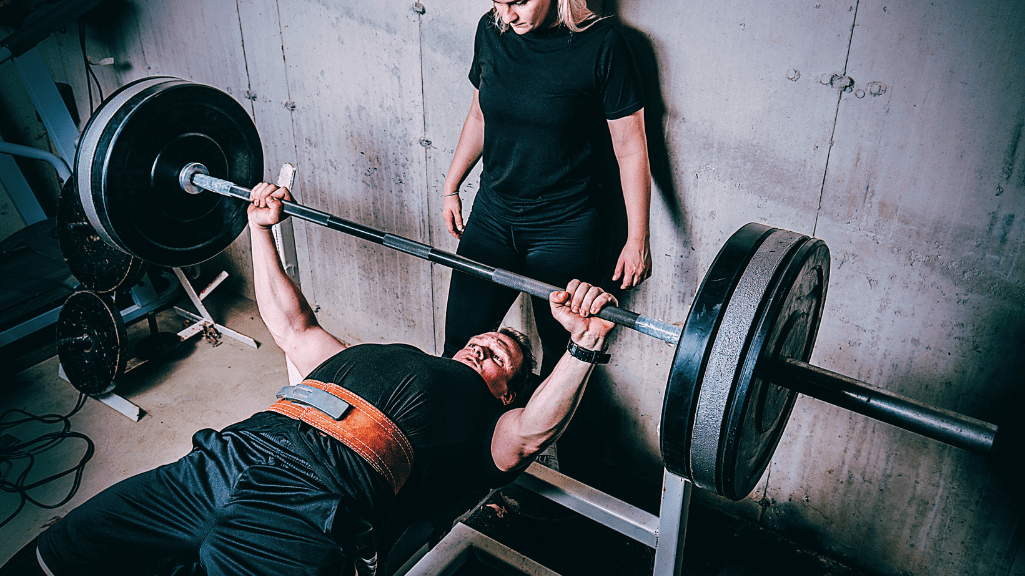
Frequency
The frequency of your powerlifting program plays a significant role in achieving your goals. Different training splits can be used depending on your experience level and available time. Below are some common splits and their benefits.
- Full-body Split: Training all major lifts (squat, bench press, deadlift) in a single session.
- Pros: Efficient use of time, promotes total body recovery.
- Cons: Requires more frequent sessions for balanced progress.
- Upper/Lower Split: Alternating between upper-body and lower-body lifts.
- Pros: Better recovery between sessions, targets specific muscle groups.
- Cons: May require more frequent training, which can increase fatigue if not managed properly.
- Push/Pull Split: Focuses on pressing movements (push) and pulling movements (pull).
- Pros: Balanced approach, reduces overlap in muscle group involvement.
- Cons: Could lead to muscular imbalances if not rotated periodically.
- Body Part Split: Dividing training into specific muscle groups (e.g., chest, back, legs).
- Pros: Targets muscles more effectively, especially for hypertrophy.
- Cons: Requires more sessions, which can lead to overuse if intensity isn’t adjusted.
For beginners, it is recommended to start with 3-4 training sessions per week. This allows for proper recovery while still progressing steadily. For intermediates and advanced lifters, more frequent sessions can be managed, but it’s important to monitor fatigue and recovery to avoid overtraining.
Volume and Intensity
Volume (sets x reps) and intensity (percentage of 1RM) are two fundamental aspects of any powerlifting program. Balancing these variables ensures steady progress while reducing the risk of injuries.
- Volume refers to how much work you’re performing in a session (e.g., 3 sets of 8 reps).
- Intensity is how heavy the weight is relative to your 1RM (e.g., 70% of your 1RM).
- High Volume, Low Intensity: Suitable for beginners to build a strong foundation with less risk of fatigue.
- Example: 3 sets of 8 at 60% of 1RM.
- Balanced Volume and Intensity: Ideal for intermediate lifters, promoting both hypertrophy and strength gains.
- Example: 4 sets of 6 at 70% of 1RM.
- Low Volume, High Intensity: Used by advanced lifters for peak strength development, minimizing unnecessary fatigue.
- Example: 3 sets of 3 at 85% of 1RM.
Periodization plays a crucial role in structuring volume and intensity. You can use undulating models, where volume and intensity fluctuate, or a linear progression, maintaining consistent increases over time. Both methods can be effective when applied correctly, depending on individual needs and goals.
- Undulating Periodization: Fluctuates intensity and volume across weekly cycles.
- Linear Periodization: Focuses on consistent progression in one direction, such as gradually increasing intensity over time.
Example Program Structures
- Beginner Program: Focuses on high volume, moderate intensity.
- Squat: 3×8 at 60% 1RM
- Bench Press: 3×8 at 60% 1RM
- Deadlift: 3×5 at 65% 1RM
- Intermediate Program: Balances volume and intensity.
- Squat: 4×6 at 70% 1RM
- Bench Press: 4×6 at 70% 1RM
- Deadlift: 3×6 at 75% 1RM
- Advanced Program: Focuses on lower volume, higher intensity, with deload phases.
- Squat: 3×3 at 85% 1RM
- Bench Press: 3×3 at 85% 1RM
- Deadlift: 3×3 at 90% 1RM
A well-structured powerlifting program balances frequency, volume, and intensity to support long-term progress while minimizing injury risk. Whether you’re a beginner, intermediate, or advanced lifter, understanding these fundamentals will help you achieve your goals efficiently. By tailoring your approach based on your experience level and using effective periodization, you’ll maximize both performance and recovery.
Progressive Overload in Your Powerlifting Program
Progressive overload is a fundamental principle in a successful powerlifting program. It involves gradually increasing the stress placed on your muscles, allowing them to adapt and grow stronger over time. Without this gradual progression, your gains may plateau, and you risk losing consistency in your performance. In this section, we’ll explore how to implement progressive overload effectively and maintain long-term progress.
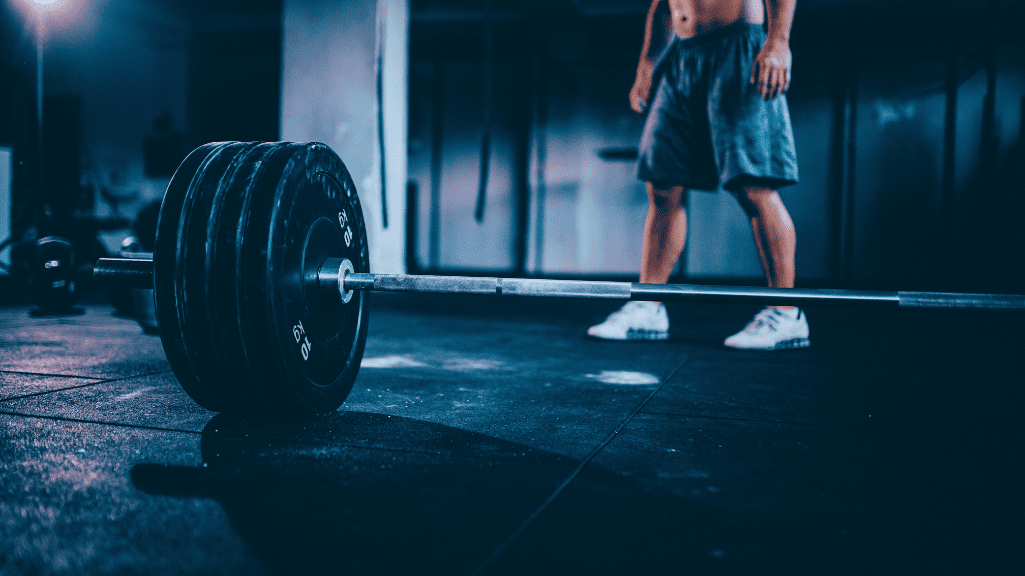
Progressive Overload Methods
The key to successful progressive overload is to ensure that each training session challenges your muscles just enough to stimulate growth, but not so much that it leads to burnout or injury. Here are some methods to gradually increase weights while maintaining proper form:
- Incremental Increases:
Gradually adding weight to your lifts ensures continuous progression. For example, increasing the barbell by 2.5-5 pounds (1-2.5 kg) each week keeps the intensity high without overloading the nervous system. - Form Focus:
Proper form should always be prioritized over heavier weights. Focusing on quality movement patterns ensures that strength gains come from muscle growth rather than compensatory movements. - Accessory Lifts:
Accessory movements can also follow a similar progression pattern. For instance, adding weight to exercises like weighted dips or accessory rows in small increments allows balanced development alongside your main lifts.
Importance of Deloading
Deloading plays a crucial role in managing fatigue and ensuring sustained progress in your powerlifting program. After peak training phases, taking a step back allows your body to recover and reset for continued gains. Neglecting deload periods can lead to burnout, injuries, and a plateau in performance.
- Managing Fatigue:
Over time, consistent heavy lifting increases the risk of overuse injuries and burnout. Implementing a deload week—reducing volume and intensity—provides the necessary break to promote recovery and maintain long-term progression. - Off-Season Training:
During off-season phases or after high-volume cycles, deloading helps reset your baseline, ensuring you return to training feeling refreshed and ready to build strength again.
Monitoring Long-term Progress
Consistent, small increases in weight are more effective for sustainable progress than attempting large jumps. By keeping your progression steady, you reduce the risk of hitting plateaus and allow for gradual adaptation.
- Long-Term Focus:
Rather than pushing for rapid gains, aim for regular, consistent improvements. Tracking progress in smaller increments helps ensure that progress remains steady, minimizing both physical and mental fatigue. - Example:
A typical approach might be to increase your squat by 2.5 pounds (1.25 kg) each week until you reach a point where form begins to break down. At that point, a deload week resets your progression while maintaining your strength.
Balancing Accessory Lifts
Accessory lifts are essential for developing strength and addressing weaknesses, especially in a powerlifting program. They complement your main lifts and provide a well-rounded approach to training.
- Progression:
Similar to main lifts, accessory exercises should progress in a controlled manner. For example, weighted dips or rows can increase by 1-2.5 pounds (0.5-1 kg) weekly to ensure balanced muscle development without sacrificing form. - Recovery:
Accessory work should not interfere with recovery from your primary lifts. Balancing these movements helps improve weaker muscle groups while supporting your overall strength journey.
Progressive Overload Strategies by Experience Level
| Experience Level | Method of Overload | Recommended Increase | Focus Area | Common Pitfalls |
|---|---|---|---|---|
| Beginner (0-1.5 years) | Incremental Load Increases | +2.5-5 lbs (1-2.5 kg) per week | Mastering form, building a base | Rushing weight increases, neglecting technique |
| Intermediate (2-5 years) | Volume Progression & Load Cycling | Add sets/reps before increasing weight | Strength and muscle balance | Overtraining, ignoring recovery |
| Advanced (5+ years) | Intensity & Peaking Strategies | +1-2.5 lbs (0.5-1 kg) per cycle | Maximizing 1RM, peaking for competition | Lack of deloading, excessive fatigue |
Progressive overload is a vital component of a successful powerlifting program. By gradually increasing weights while maintaining proper form, and managing fatigue through deloads, you can ensure consistent gains over the long term. Implementing small, consistent increases and balancing accessory lifts will help you avoid plateaus and continue progressing effectively.
Accessory Movements in Your Powerlifting Program
Accessory movements play a crucial role in developing a well-rounded and effective powerlifting program. These exercises are designed to target specific muscle groups that may be weaker or need additional focus to complement your primary compound lifts. Implementing accessory work ensures balanced strength and reduces the risk of injury. In this section, we’ll explore how to choose and incorporate accessory movements into your training for optimal results.
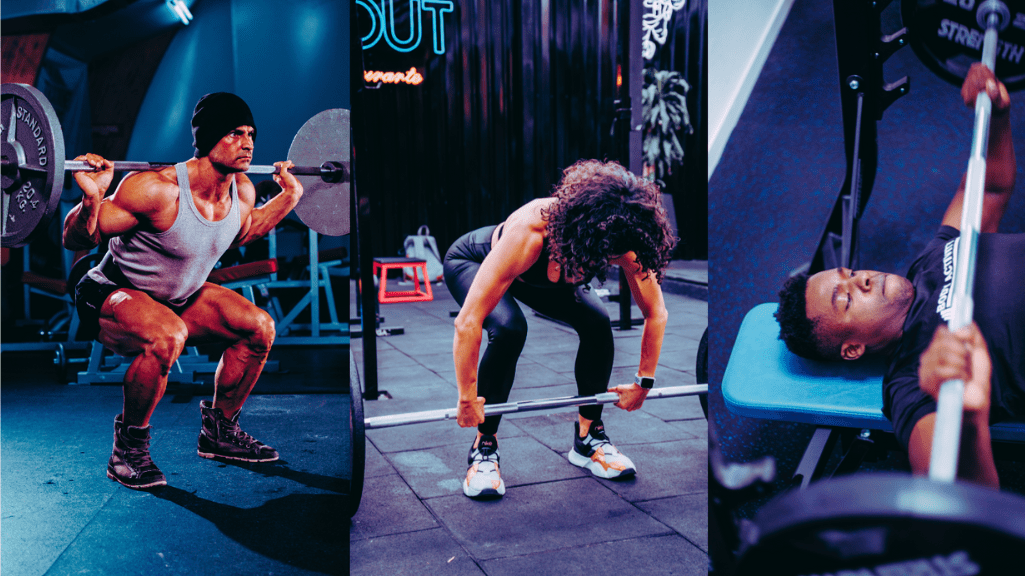
Supporting Compound Movements
Accessory lifts are selected to support and enhance the main compound movements—squat, bench press, and deadlift. By addressing weaknesses and improving overall muscle balance, these movements help improve performance in your primary lifts.
- Squat:
- Box Squats: Help improve depth control and reduce reliance on the bounce at the bottom of the lift.
- Front Squats: Strengthen the quads and improve core stability.
- Bulgarian Split Squats: Enhance unilateral strength and stability in the legs.
- Bench Press:
- Dumbbell Press: Targets stabilizer muscles and increases shoulder strength.
- Floor Press: Focuses on lockout strength and limits the use of leg drive.
- Incline Bench: Builds upper chest and shoulder stability.
- Deadlift:
- Rack Pulls: Strengthen the top portion of the deadlift and improve lockout strength.
- Deficit Deadlifts: Increase range of motion and develop stronger hip drive.
- Glute Ham Raises: Enhance posterior chain strength and reduce lower back strain.
Addressing Weak Points
In a well-structured powerlifting program, it’s important to identify and address weak points that may hinder performance. Common weaknesses include lagging muscle groups that affect specific lifts, such as triceps for bench press or the core for deadlifts.
- Weak Triceps:
Exercises like skull crushers, tricep pushdowns, or close-grip bench press can be integrated to strengthen this area, improving lockout strength during the bench press. - Weak Core:
Implementing exercises such as ab wheel rollouts, planks, and weighted carries helps strengthen the core, which is essential for maintaining proper posture and stability during deadlifts.
Addressing these weaknesses through accessory movements ensures that your compound lifts improve, while also reducing the likelihood of injury caused by muscle imbalances.
Implementing Accessory Work
When adding accessory movements to your powerlifting program, it’s essential to balance volume and intensity to avoid overtraining. These exercises are generally performed after your main lifts and should complement your overall training strategy.
- Frequency:
Perform accessory movements 1-2 times per week, depending on how heavily your primary lifts are prioritized. - Progression:
Gradually increase weights and reps in a controlled manner, focusing on maintaining good form.
By consistently including accessory work, you create a more balanced approach to strength development. This allows for continued progress in your primary lifts, with a reduced risk of muscular imbalances and overuse injuries.
Accessory movements are an integral part of a well-rounded powerlifting program. By targeting weak points and supporting primary lifts, these exercises ensure balanced development and enhance overall performance. Whether it’s improving triceps strength for bench press or building core stability for deadlifts, accessory work plays a crucial role in achieving long-term gains. Properly implementing these movements keeps your training both effective and injury-free.
Recovery & Nutrition for Your Powerlifting Program
In a powerlifting program, recovery and nutrition play crucial roles in maximizing performance and preventing injury. Strength training is demanding, requiring a balance of intense effort and effective recovery. Whether you’re just starting out or an experienced lifter, paying attention to these aspects ensures steady progress toward your goals.

Rest and Recovery
Rest and recovery are often overlooked but are essential for long-term success in a powerlifting program. Without proper recovery, your performance will plateau, and the risk of injury increases.
- Active Recovery:
Incorporating light activities such as walking, swimming, or cycling can help promote blood flow to muscles and aid in recovery without adding strain. - Foam Rolling:
This technique reduces muscle tightness and helps release muscle tension, improving flexibility and mobility. - Sleep Optimization:
Quality sleep is critical for muscle repair and hormone regulation. Aim for 7-9 hours of restful sleep each night to enhance recovery. - Deloading Phases:
Every 4-6 weeks, taking a deload week can significantly reduce fatigue. During this phase, volume or intensity is reduced, allowing the body to recover while maintaining strength gains. - Mobility Work:
Dynamic stretching, yoga, and other mobility exercises improve flexibility and reduce injury risk. These practices ensure your body moves efficiently and with less restriction.
Nutrition
Nutrition is the foundation of a successful powerlifting program. Properly fueling your body ensures that you have the energy and nutrients necessary for growth, recovery, and performance.
- Macronutrient Requirements:
Depending on your goals, macronutrient needs will vary. For example:- Bulking: A higher calorie intake focused on building muscle, typically with a balanced ratio of protein, carbohydrates, and fats.
- Cutting: A calorie deficit to promote fat loss, maintaining adequate protein intake to preserve muscle mass while reducing carbohydrates and fats.
- Protein:
Essential for muscle repair and growth, aiming for 1.6 to 2.2 grams of protein per kilogram of body weight. This supports recovery and performance in heavy training sessions. - Carbohydrates:
Provide energy for intense sessions. Focus on complex carbohydrates like sweet potatoes, quinoa, and rice to sustain energy levels throughout training. - Fats:
Healthy fats, such as avocados, nuts, and olive oil, support hormonal health and overall recovery. - Hydration:
Staying properly hydrated is vital for optimal performance. Dehydration can lead to reduced strength, slower recovery, and decreased endurance. Aim for at least 2-3 liters of water per day, depending on training intensity and environmental conditions.
Balancing Recovery and Nutrition
A well-rounded powerlifting program involves balancing recovery and nutrition to ensure both performance and injury prevention. Neglecting one can negatively impact the other, leading to setbacks and a slower progression toward your goals.
- Supplementation:
While whole foods should be prioritized, supplements such as creatine, branched-chain amino acids (BCAAs), and omega-3 fatty acids can complement your diet and support recovery and muscle growth. - Personalization:
Every athlete is different. Customizing your recovery and nutrition plan to suit your specific needs, goals, and training intensity will yield the best results.
Recovery and nutrition are essential components of a successful powerlifting program. Prioritizing rest, proper nutrition, and consistent hydration ensures you stay on track toward achieving your performance goals. Whether you’re looking to build muscle, lose fat, or increase strength, maintaining a balanced approach to recovery and nutrition will keep you healthy and progressing steadily.
Tracking and Adjusting Your Powerlifting Program
To ensure continuous progress in your powerlifting program, tracking and making adjustments is essential. Whether you are a beginner or an advanced lifter, regularly monitoring your performance allows you to stay on track and fine-tune your approach. In this section, we’ll explore how to track progress and make effective adjustments to your training.
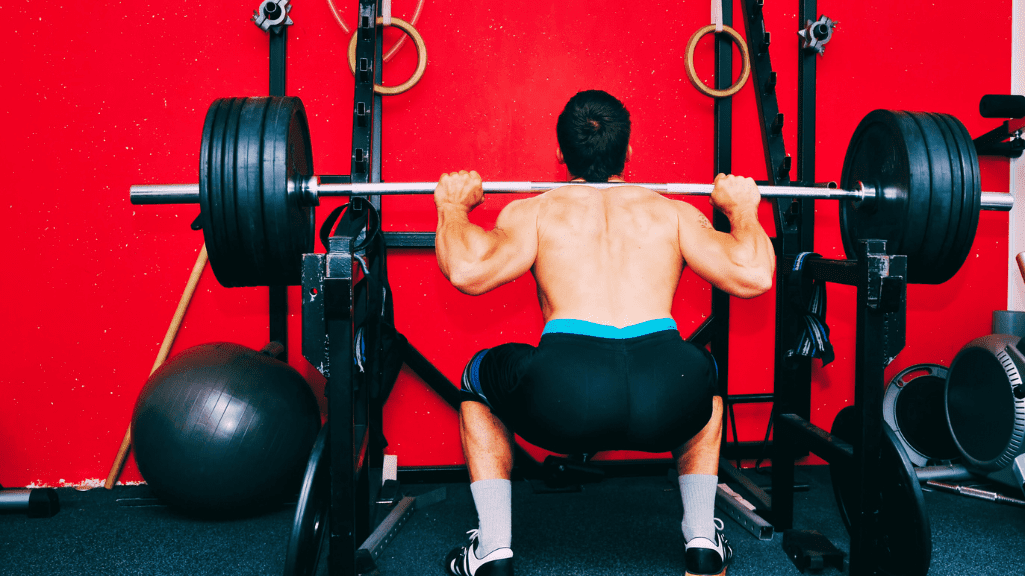
Monitoring Progress
Tracking your progress is crucial for identifying areas of improvement and staying motivated. Key metrics to monitor include weight lifted, sets, reps, RPE (Rate of Perceived Exertion), and Recovery Status.
- Weight Lifted:
Keeping a record of how much weight you lift over time helps measure gains in strength. This could be the amount lifted in your main lifts—squat, bench press, and deadlift—or accessory lifts. - Sets and Reps:
Tracking the number of sets and repetitions performed in each session allows you to gauge your progress and establish patterns. Adjusting these variables based on performance ensures steady improvement. - RPE (Rate of Perceived Exertion):
RPE measures how difficult a lift feels on a scale from 1 to 10. This subjective metric helps monitor intensity, ensuring you’re working within the appropriate effort level for progression. - Recovery Status:
Recording how your body feels post-training, including soreness, fatigue, and readiness for the next session, provides insight into how well you are recovering and adapting to training demands.
Using tools such as spreadsheets, mobile apps, or journals to consistently log this data allows for easy access and analysis of progress. Regularly reviewing this data can help you spot trends and adjust your program accordingly.
Adjusting Your Program
As you progress, it’s important to reassess and adjust your powerlifting program to ensure continued growth. Over the course of 4-6 weeks, changes to volume, intensity, or accessory work may be necessary to prevent stagnation and optimize performance.
- Reassessment:
At regular intervals, reflect on your progress through performance reviews. Consider how your lifts have progressed, whether your recovery has been adequate, and if your form has remained consistent. - Adjusting Volume and Intensity:
Based on performance trends, adjust the number of sets, reps, and the weight lifted to ensure optimal effort. If strength plateaus, a temporary reduction in volume with an increase in intensity might be beneficial. - Changing Accessory Work:
If certain accessory lifts are no longer yielding improvements, explore alternatives that target weak points. This ensures accessory work supports primary lifts effectively and addresses imbalances.
Periodization and Progression
Incorporating a structured periodization model into your powerlifting program helps prevent plateaus. This involves alternating between phases of higher volume and lower intensity with phases of higher intensity and lower volume.
- Phases:
- Hypertrophy Phase: Focus on higher volume to build muscle mass.
- Strength Phase: Emphasize lower volume with higher intensity to improve maximum strength.
- Peaking Phase: Peak for a competition by reducing volume and increasing intensity, focusing on performance.
- Monitoring and Adjusting:
Regularly monitor progress during each phase, adjusting programming as necessary to maintain balance between volume and intensity.
Tracking and adjusting your powerlifting program is a continuous process that ensures steady progress and long-term success. By monitoring key metrics and making periodic adjustments to volume, intensity, and accessory work, you create a program tailored to your strengths and weaknesses. Consistent reflection and adaptation keep your training dynamic and optimized for peak performance.
Periodization and Phases in Your Powerlifting Program
In a powerlifting program, periodization plays a crucial role in structuring training to optimize performance, prevent burnout, and achieve long-term goals. By dividing your training into distinct phases, you can target specific outcomes such as muscle growth, strength increases, and peak performance for competitions. In this section, we’ll explore block periodization and how to effectively manage different phases.
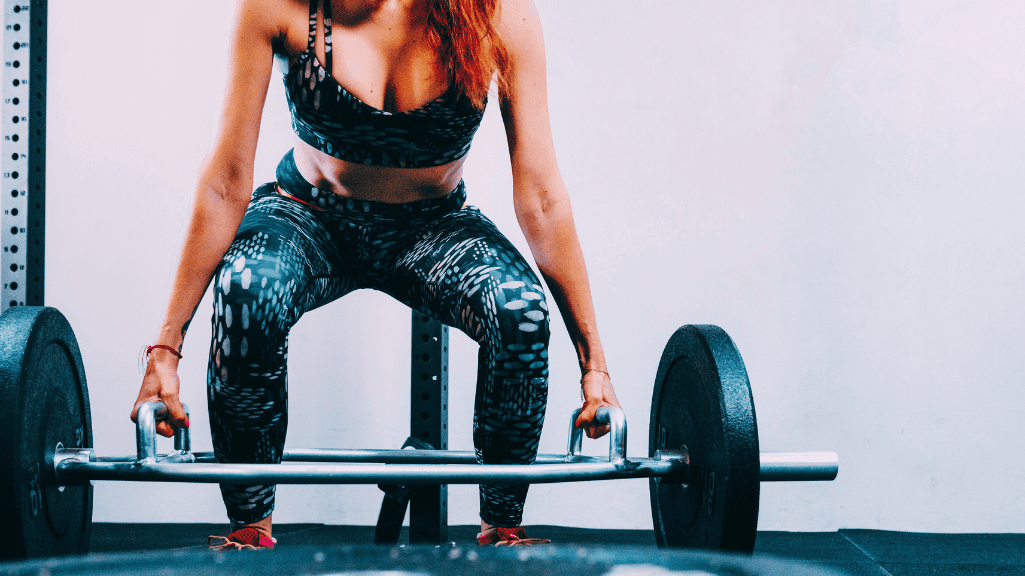
Block Periodization
Block periodization is a method of structuring your powerlifting program into distinct phases that focus on different training goals. These phases are sequential, ensuring a well-rounded progression toward your overall goals.
1. Hypertrophy Phase
This phase focuses on building muscle mass and improving muscle size, which is crucial for increasing overall strength. During hypertrophy, the emphasis is placed on higher volume and moderate intensity.
- Training Focus:
Higher repetitions (typically 8-12 reps per set) with moderate weights around 60-70% of your 1RM.
Accessory lifts are also utilized to address weaknesses and improve overall muscle balance. - Goal:
To increase muscle cross-sectional area and improve muscular endurance.
2. Strength Phase
Following the hypertrophy phase, the strength phase is designed to translate that muscle mass into raw, maximal strength. This phase involves lower repetitions with higher weights.
- Training Focus:
Lower repetitions (4-6 reps per set) with heavier weights at 75-85% of your 1RM.
Primary lifts like squat, bench press, and deadlift are the focal points, with accessory work targeting specific weak points. - Goal:
To increase the maximum amount of weight lifted for each major lift.
3. Peaking Phase
The peaking phase is specifically aimed at achieving peak performance for a particular competition. During this phase, volume is reduced while intensity is maximized, ensuring optimal strength for competition day.
- Training Focus:
Very low volume with extremely high intensity (90-100% of 1RM) in key lifts. Accessory lifts may still be included, but they will focus solely on injury prevention and maintaining strength. - Goal:
To reach maximum competitive readiness for a specific event, focusing on hitting PRs (personal records) on the platform.
Deloads Between Phases
Throughout each phase, incorporating deload periods is essential for maintaining long-term progress. A deload is a period where training volume and intensity are significantly reduced to allow the body to recover fully before resuming more demanding training.
- Why Deloads Matter:
Without proper recovery, fatigue builds up, leading to stagnation or even injury. A well-timed deload between phases allows the body to adapt fully and absorb the training stimulus more effectively. - How Deloads Are Implemented:
During a deload week, volume is decreased by 40-60% while intensity is brought down to 50-60% of 1RM. This allows for active recovery while maintaining movement patterns. - Impact on Progress:
By including deloads every 4-6 weeks, you ensure that each phase supports steady gains while maintaining peak physical and mental readiness.
Benefits of Periodization
The structured approach of periodization in a powerlifting program offers several benefits:
- Prevents Plateaus: Training in blocks helps target specific goals without overwhelming your body, reducing the risk of hitting a plateau.
- Reduces Injury Risk: Deloads and targeted phases ensure that intensity is manageable, minimizing the risk of overuse injuries.
- Optimizes Performance: Each phase focuses on a unique aspect of strength development—be it hypertrophy, strength, or peaking—ensuring a well-rounded and balanced progression.
Periodization plays a vital role in the structure of a powerlifting program. By incorporating distinct phases like hypertrophy, strength, and peaking, along with well-timed deloads, you create a systematic approach that fosters continual progress. This allows for long-term gains in strength and performance while minimizing the risk of burnout or injury.
Common Mistakes to Avoid in Your Powerlifting Program
Creating and maintaining a powerlifting program requires a balance of effort, consistency, and smart programming. While there are countless benefits to structured training, mistakes can easily derail progress if not addressed. In this section, we’ll explore common errors that lifters often encounter and provide guidance on how to avoid them.
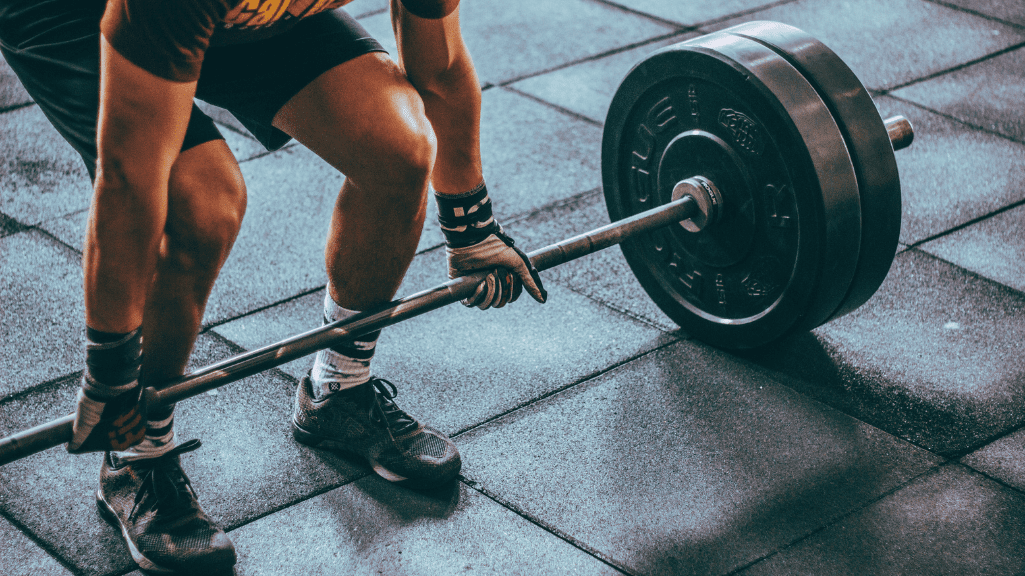
1. Ignoring Recovery and Over-Training
One of the most overlooked aspects of a powerlifting program is recovery. While pushing yourself to your limits is necessary for progress, overdoing it without adequate rest can lead to burnout and injury.
- Why Recovery Matters:
Training puts stress on the body, and if sufficient recovery isn’t factored into the program, it becomes difficult for muscles and the nervous system to repair and grow stronger. Ignoring this can result in stagnation or overuse injuries. - Signs of Over-Training:
Persistent fatigue, decreased performance, frequent injuries, and poor sleep quality are clear indicators that your body isn’t recovering properly. - How to Avoid It:
- Implement regular deload weeks to reduce volume and intensity.
- Ensure you get adequate sleep, nutrition, and hydration.
- Listen to your body. If something doesn’t feel right, adjust your training accordingly.
2. Neglecting Mobility Work Leading to Injury
Mobility and flexibility work are often seen as supplemental to lifting heavy weights, but they play a vital role in injury prevention. Ignoring these aspects in a powerlifting program can lead to tight muscles, poor movement patterns, and ultimately, injuries.
- Common Mobility Issues:
Tight hips, stiff shoulders, or limited thoracic mobility can negatively impact your lifts. For instance, poor hip mobility can result in rounding the back during a deadlift, which increases the risk of injury. - How to Integrate Mobility Work:
- Incorporate dynamic stretching and mobility drills at the start of each session.
- Consider exercises like yoga, foam rolling, or dynamic warm-ups to improve flexibility and joint health.
- Benefits of Consistent Mobility Work:
Increased flexibility, improved movement patterns, and reduced injury risk will help you lift more efficiently while maintaining long-term health.
3. Focusing Solely on Maximal Effort Without Accessory Work or Deloads
Another common mistake is focusing exclusively on maximal effort without balancing accessory work and deloads. This can lead to neglecting specific weak points and increasing the risk of burnout.
- Why Accessory Work Matters:
Main lifts like squat, bench press, and deadlift require strength not only from primary movers but also from stabilizers, secondary muscles, and smaller muscle groups. Neglecting accessory work can leave gaps in your strength development. - The Importance of Deloads:
Deload weeks are crucial for maintaining progress without accumulating excessive fatigue. They allow for active recovery, helping to reset the nervous system and prevent injury. - How to Balance Effort:
- Pair maximal effort sessions with accessory work to target weaknesses.
- Periodically incorporate deload weeks to manage fatigue and improve long-term performance.
Avoiding These Mistakes for a Sustainable Powerlifting Program
To create a sustainable and effective powerlifting program, it’s essential to prioritize recovery, mobility, and balanced training. By addressing these common mistakes, you’ll be able to train smarter, improve performance, and maintain a healthy, injury-free training journey.
Mastering Your Powerlifting Program: Building Strength Through Consistency
Creating a successful powerlifting program requires more than just heavy lifting. It involves careful planning, dedication, and consistency to see progress. In this final section, we’ll discuss why consistency plays a pivotal role in a powerlifting program, what components contribute to it, and how sharing experiences with others can enhance your journey.
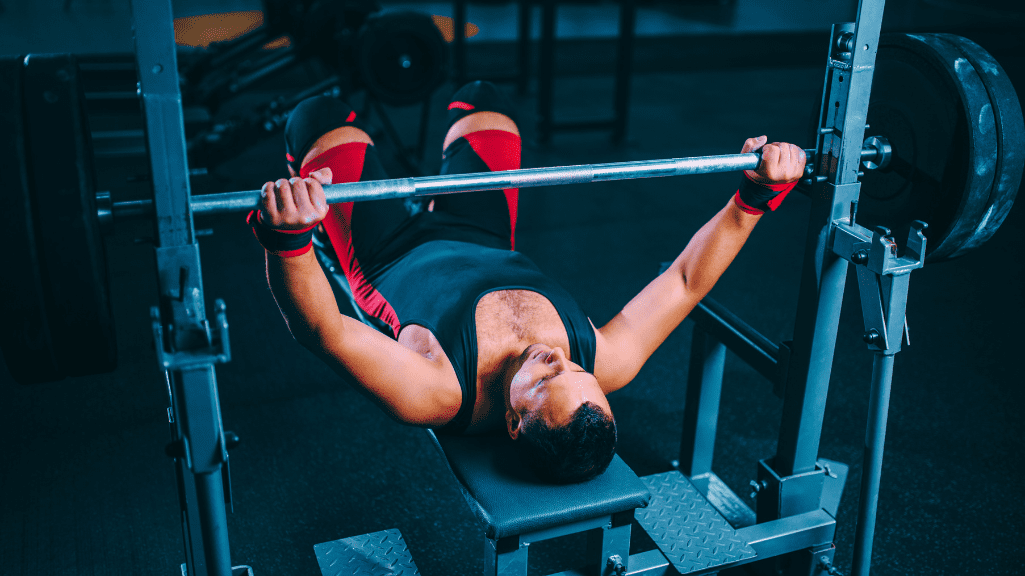
Why Consistency Matters in a Powerlifting Program
Consistency is the cornerstone of any effective powerlifting program. Without it, progress stagnates, and setbacks become inevitable. Here’s why it deserves a prominent place in your training:
- Steady Progress: Consistency ensures small, incremental improvements over time, leading to long-term success.
- Building Habits: Consistent training creates habits that make training sessions a regular part of life.
- Mental Resilience: Regular training fosters mental toughness, making it easier to overcome obstacles and stay motivated.
Components of a Consistent Powerlifting Program
To maintain a consistent powerlifting program, certain elements must be balanced:
- Structured Programming: Regularly updating your program to reflect progress and adjust for new challenges.
- Recovery and Nutrition: Prioritizing rest, proper nutrition, and hydration to allow the body to recover effectively.
- Tracking Progress: Continuously monitoring weights lifted, volume, and how the body responds to training.
Encourage Sharing and Community Interaction
Sharing your experiences with a powerlifting program not only helps you but also inspires others. Every lifter faces unique challenges and triumphs. By engaging with a community, you gain valuable insights and build meaningful connections.
Comment Section: Share your journey, ask questions, or discuss what has worked (or not worked) in your powerlifting program!
Motivational Quote for Success in Powerlifting
“Strength doesn’t come from what you can do; it comes from overcoming the things you once thought you couldn’t.” – Rikki Rogers
Frequently Asked Questions (FAQ) – Powerlifting Program
- What is the best way to structure a powerlifting program for beginners?
For beginners, focus on a full-body or upper/lower split, with 3-4 sessions per week, ensuring balance between primary lifts and accessory work. - How often should I deload in a powerlifting program?
A deload is recommended every 4-6 weeks to manage fatigue and prevent overtraining. Deload weeks involve reducing volume or intensity significantly. - What role does nutrition play in a powerlifting program?
Nutrition supports recovery, strength gains, and overall health. Balancing macronutrients based on your goals—bulking, cutting, or maintaining—is essential. - Is it better to prioritize hypertrophy or strength in a powerlifting program?
It depends on your goals. Hypertrophy focuses on muscle growth, while strength focuses on lifting heavier loads. Both are beneficial when combined strategically. - How do I address weak points in my lifts?
Incorporating targeted accessory lifts for weak points, such as pull-ups for weak lats or core exercises for deadlifts, can significantly improve overall performance. - What’s the best way to track progress in a powerlifting program?
Use spreadsheets, apps, or journals to log sets, reps, weights, and how your body responds to training. Regular reviews help adjust your program accordingly. - How can I avoid injury while following a powerlifting program?
Focus on mobility, proper form, and regular deloads. Listening to your body and incorporating preventive measures such as stretching or dynamic warm-ups will reduce injury risk. - Should I train more frequently if I want to gain strength faster?
While frequency is important, it must be balanced with adequate recovery. More frequent training is suitable for intermediates or advanced lifters but should include structured deload phases. - What is the difference between block periodization and linear progression?
Block periodization splits training into phases (hypertrophy, strength, peaking), allowing focused progress. Linear progression keeps increasing weights gradually over time. - Is accessory work necessary in a powerlifting program?
Yes. Accessory work strengthens stabilizers, weak points, and improves overall lift efficiency, complementing your main lifts.
Consistency, thoughtful programming, and community engagement will lead to sustainable progress in your powerlifting program. Stay dedicated, stay strong, and enjoy the journey!


